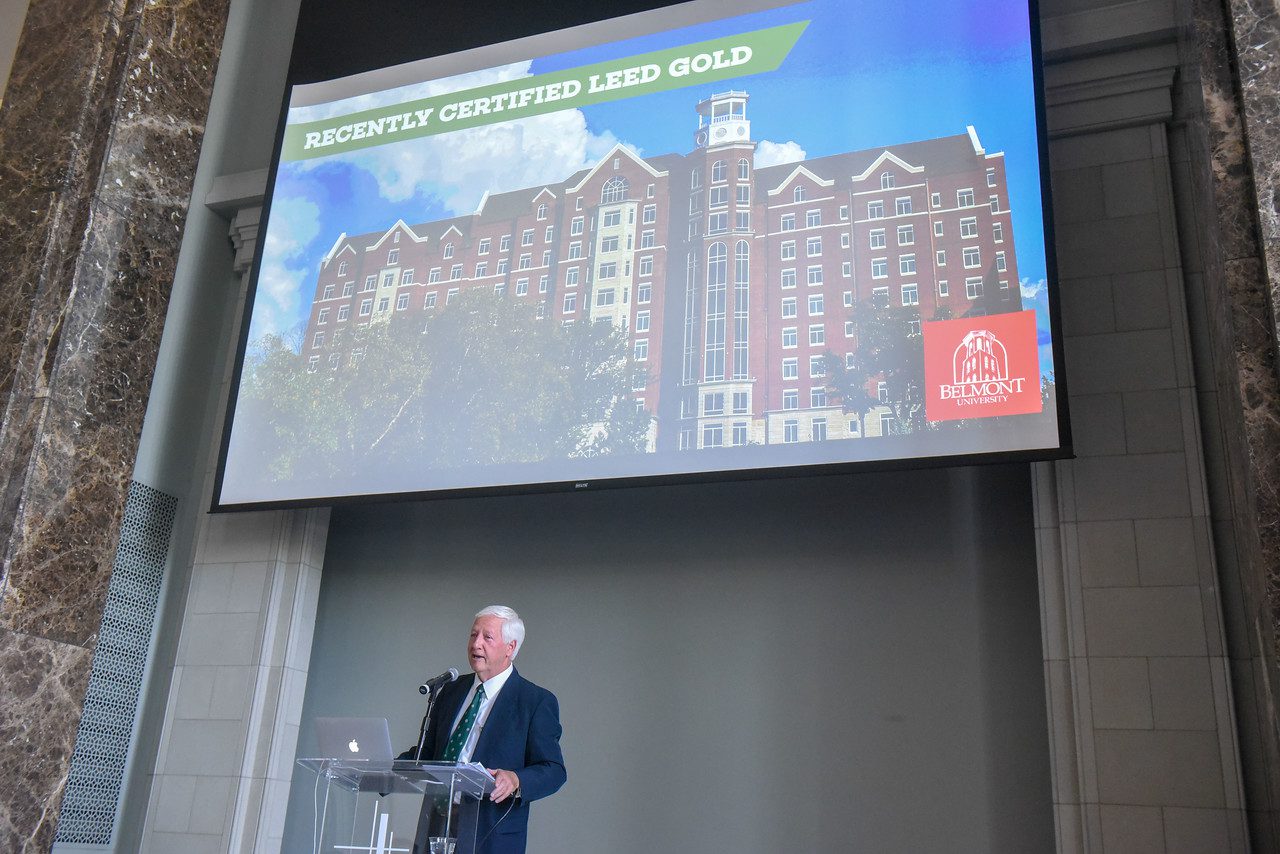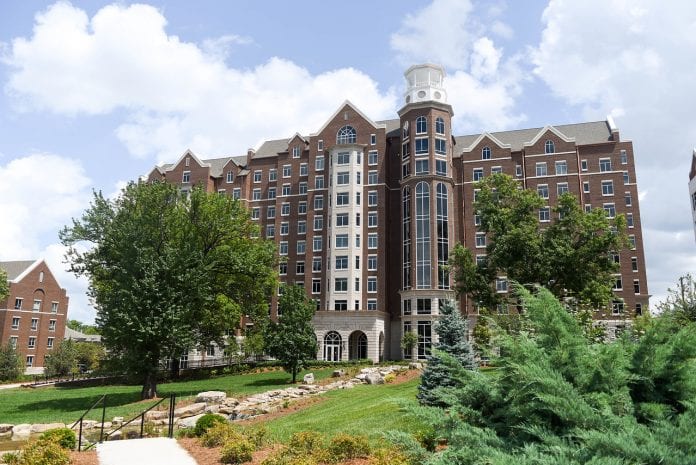The U.S. Green Building Council recently awarded Belmont’s Tall Hall with LEED certification at the Gold level, the University announced today during its Earth Day celebration. Visible from countless spots around the city, Belmont’s newest residence hall officially opened its doors last August to welcome 610 residents. The 243,000 square foot facility includes a basement and 10 floors and sits atop a hilly area between 12 South and 15thAvenue. Based on overall elevation, the structure’s top floor represents one of the highest points in Nashville. Tall Hall joins the Baskin Center and Johnson Center as LEED Gold-certified buildings on campus while the Ayers Academic Center was certified LEED Platinum, the highest in the LEED ratings system.
The LEED® (Leadership in Energy and Environmental Design) Green Building Rating System™ is a feature-oriented rating system that awards buildings points for satisfying specified green building criteria. The six major environmental categories of review are Sustainable Sites, Water Efficiency, Energy and Atmosphere, Materials and Resources, Indoor Environmental Quality and Innovation and Design.
“I’m incredibly proud of this latest residential addition to Belmont’s campus,” said University President Dr. Bob Fisher. “Both inside and out, our design and construction teams did a fantastic job creating a beautiful home for hundreds of students while retaining an inviting park-like setting in the midst of an urban area. Better still, while extensive in size and scope, Tall Hall represents our mission to create environmentally-conscious structures that conserve energy and water, protect open space and use locally sourced materials.”

Tall Hall’s LEED Gold certification was announced today during an Earth Day-themed Chapel service, led by President Fisher, as part of Belmont’s Sustainability Celebration. Designed and built by locally-owned companies Earl Swensson Associates (ESa) and R.C. Mathews, Tall Hall implements a number of sustainable practices to help reduce the building’s environmental impact:
Site Highlights
- Located in a diverse neighborhood with access to quality transit & community services
- Secure bicycle parking is provided for sustainably moving about the campus.
- Over 55% of the site is protected as open space
Water Usage
- 47% reduction in water usage in flush & flow fixtures (saving approximately 4.3 million gallons of water annually)
Energy Conservation (Mechanical & Electrical System Design)
- Energy usage was reduced by 30% over a
baseline building due to several factors:
- Space conditioning provided by high efficiency variable refrigerant flow (VRF) HVAC system
- Dedicated Outdoor Air System (DOAS) with energy recovery
- Condensing boilers for domestic hot water
- Premium efficiency motors for fans
- Efficient lighting design with LED fixtures and integrated lighting controls
- The Energy use reduction results in approximately $107,950 in annual energy savings for the University.
Materials and Resources
- 55% of construction waste was diverted from landfills (3,200 cubic yards total)
- 24% of all materials (by cost) installed for the project contained recycled content
- 29% of all materials installed for the project (by cost) were manufactured and extracted/harvested/recovered within 500 miles of the project site.
Indoor Environmental Quality
- Low/no VOC adhesives, sealants, flooring systems, paints and coatings, composite wood, and agrifiber were used on the project site whenever possible.
Innovation in Design
- Exemplary performance was achieved for maximizing open space and by using a high level of locally sourced materials.
- An Innovation in Design credit was awarded for Green Building Education, which includes a case study, formatted as a handout that will be made available in the building lobby, and an outreach program, formatted as a separate page within the extensive sustainability section of Belmont’s website.
Tall Hall is the focal point of a picturesque scene on the campus’ southeast quadrant, as the building is bordered by large green space and a babbling “Bear Creek” that features a bronzed bear sculpture, “Chum Run,” crafted by acclaimed Wyoming visual artist Sandy Scott.



